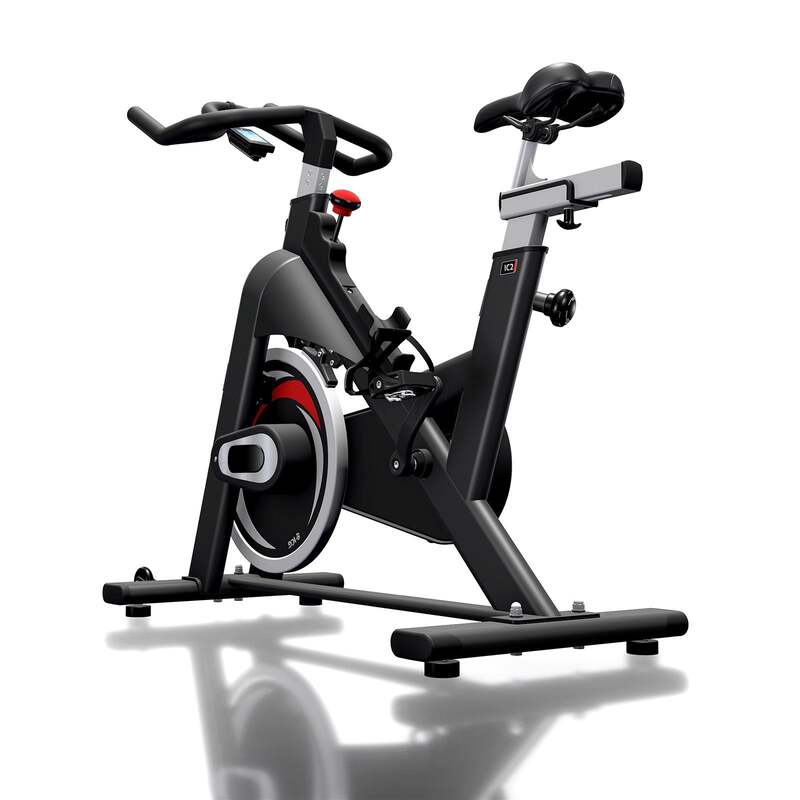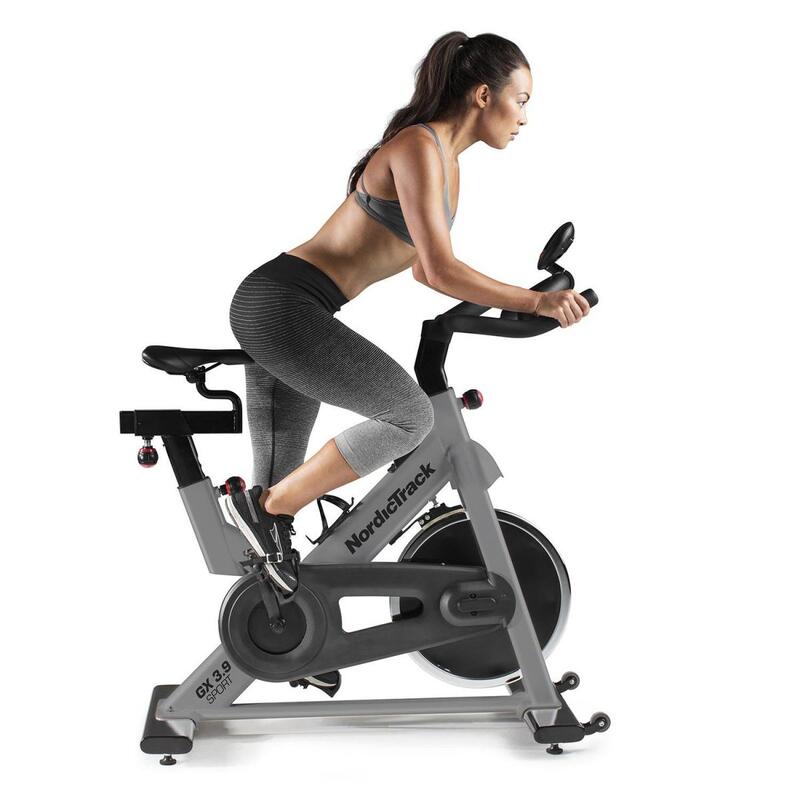Using a stationary bike provides a convenient and effective way to achieve cardiovascular fitness and muscle strength. Unlike other forms of cardio, stationary biking offers a low-impact option suitable for all fitness levels. Therefore, understanding the specific muscles targeted during a stationary bike workout is essential for maximizing its benefits. This comprehensive guide explores the various muscle groups engaged, the benefits of cycling, and tips for optimizing your workout. By following these insights, you can ensure a well-rounded and effective exercise regimen.

Lower Body Muscles
The primary focus of a stationary bike workout is the lower body, engaging several key muscle groups. Therefore, exploring these muscles highlights the primary benefits of cycling.
Quadriceps
The quadriceps, located at the front of the thigh, are one of the main muscle groups worked during cycling. These muscles extend the knee and are highly active during the downward pedal stroke. The quadriceps consist of four muscles: the rectus femoris, vastus lateralis, vastus medialis, and vastus intermedius. Regular cycling helps strengthen the quadriceps, contributing to better knee stability and improved leg strength. Additionally, stronger quads enhance overall cycling performance and endurance. Therefore, recognizing the importance of quadriceps engagement ensures a better understanding of cycling’s impact on leg strength.
Hamstrings
The hamstrings, located at the back of the thigh, are also significantly engaged during a stationary bike workout. These muscles perform knee flexion and hip extension, making them crucial for the upward pedal stroke. The hamstrings consist of three muscles: the biceps femoris, semitendinosus, and semimembranosus. As you pedal, the hamstrings work in conjunction with the quadriceps to create a smooth and efficient motion. Strengthening the hamstrings helps balance the leg muscles, reducing the risk of imbalances and injuries. Therefore, understanding the role of the hamstrings ensures a comprehensive lower body workout.
Core Muscles
While the lower body gets the most attention, the core muscles are also engaged during a stationary bike workout. Therefore, exploring the core engagement highlights the full-body benefits of cycling.
Abdominals
The abdominal muscles, or abs, play a supportive role in maintaining posture and stability while cycling. The abs consist of several muscle groups, including the rectus abdominis, obliques, and transverse abdominis. Engaging the core helps stabilize the pelvis and lower back, promoting efficient pedaling and reducing the risk of back pain. Strengthening the abdominal muscles through cycling improves overall core stability and posture. Additionally, a strong core enhances performance in various physical activities and daily tasks. Therefore, recognizing the importance of abdominal engagement ensures a well-rounded workout.
Lower Back Muscles
The lower back muscles, including the erector spinae, are involved in maintaining an upright posture on the stationary bike. These muscles provide support and stability for the spine, preventing slouching and discomfort. As you cycle, the lower back muscles help absorb and distribute the forces generated by pedaling. Strengthening the lower back through cycling contributes to better posture, reduced back pain, and enhanced overall core strength. Therefore, understanding the role of the lower back muscles highlights the comprehensive benefits of stationary biking.

Upper Body Muscles
Although cycling primarily targets the lower body, the upper body muscles also play a supportive role. Therefore, exploring the upper body engagement emphasizes the full-body nature of the workout.
Shoulders
The shoulder muscles, including the deltoids and rotator cuff, are engaged to stabilize the upper body during cycling. Proper hand placement and posture ensure the shoulders remain active and support proper alignment. Keeping the shoulders relaxed and engaged reduces tension and promotes efficient breathing. Strengthening the shoulder muscles through cycling enhances upper body stability and endurance. Additionally, it contributes to overall upper body strength and prevents strain during prolonged rides. Therefore, recognizing the importance of shoulder engagement ensures a balanced workout.
Arms
The arm muscles, particularly the biceps and triceps, are involved in gripping the handlebars and maintaining an upright posture. Although not heavily worked, these muscles provide support and stability for the upper body. Engaging the arm muscles helps distribute weight evenly and reduces fatigue during the ride. Strengthening the arms through cycling promotes better control and handling of the bike. Additionally, it enhances overall upper body endurance and complements other strength training exercises. Therefore, understanding the role of the arm muscles highlights the full-body engagement during a stationary bike workout.
Tips for Maximizing Muscle Engagement
To optimize the benefits of a stationary bike workout, certain strategies can enhance muscle engagement and overall performance. Therefore, exploring these tips helps ensure an effective and well-rounded workout.
Proper Bike Setup
Ensuring your stationary bike is set up correctly is crucial for effective muscle engagement and preventing injuries. Adjust the seat height so your leg is nearly fully extended at the bottom of the pedal stroke, with a slight bend in the knee. Position the handlebars at a comfortable height to maintain proper posture and reduce strain. Proper bike setup promotes efficient pedaling and engages the correct muscle groups. Regularly checking and fine-tuning your bike setup can enhance comfort and performance. Therefore, recognizing the importance of bike setup ensures optimal muscle engagement and a safe workout.
Varying Resistance and Cadence
Varying the resistance and cadence during your stationary bike workout can significantly impact muscle engagement and overall intensity. Increasing resistance targets the leg muscles more intensely, promoting strength and endurance. Lower resistance with higher cadence focuses on cardiovascular fitness and pedaling efficiency. Incorporating intervals of high and low resistance challenges different muscle groups and adds variety to your workout. Adjusting your pace and resistance based on your fitness goals and level ensures a balanced and effective workout. Therefore, understanding the benefits of varying resistance and cadence maximizes muscle engagement.
Benefits of Cycling on a Stationary Bike
Cycling on a stationary bike offers numerous benefits beyond muscle engagement, contributing to overall fitness and well-being. Therefore, exploring these benefits provides a comprehensive understanding of its impact.
Cardiovascular Health
One of the primary benefits of cycling on a stationary bike is improved cardiovascular health. Regular cycling strengthens the heart, increases lung capacity, and improves blood circulation. It also helps lower blood pressure, reduce cholesterol levels, and decrease the risk of cardiovascular diseases. Engaging in moderate to high-intensity cycling sessions enhances cardiovascular endurance and overall fitness. Therefore, recognizing the cardiovascular benefits underscores the importance of incorporating stationary biking into your fitness routine.
Weight Management
Cycling on a stationary bike is an effective way to manage weight and promote fat loss. The continuous pedaling motion burns calories and increases metabolic rate. Combining stationary biking with a balanced diet and other physical activities enhances weight management efforts. High-intensity interval training (HIIT) on the bike can further boost calorie burn and fat loss. Therefore, understanding the role of cycling in weight management emphasizes its effectiveness as a cardio workout.

Incorporating Cycling into Your Fitness Routine
To fully benefit from cycling on a stationary bike, integrating it into your overall fitness routine is essential. Therefore, exploring ways to incorporate cycling enhances consistency and results.
Structured Workouts
Incorporating structured workouts into your cycling routine provides variety and targets different fitness goals. Interval training, hill simulations, and endurance rides are effective ways to challenge your muscles and cardiovascular system. Scheduling regular cycling sessions and progressively increasing intensity or duration promotes continuous improvement. Structured workouts help maintain motivation and ensure a balanced approach to fitness. Therefore, recognizing the importance of structured workouts enhances the effectiveness of your cycling routine.
Cross-Training
Cross-training with other forms of exercise complements stationary biking and promotes overall fitness. Strength training, yoga, and flexibility exercises enhance muscle balance, core strength, and joint mobility. Cross-training reduces the risk of overuse injuries and improves performance in various physical activities. Incorporating a variety of exercises ensures a well-rounded fitness routine and prevents monotony. Therefore, understanding the benefits of cross-training highlights the importance of a diverse and comprehensive approach to fitness.
Conclusion
Understanding what muscles a stationary bike works involves exploring the engagement of lower body, core, and upper body muscles. Proper knowledge ensures a well-rounded and effective workout.
Exploring elements like quadriceps and hamstrings, recognizing the importance of abdominals and lower back muscles, and identifying shoulder and arm engagement provides valuable insights. Recognizing the significance of proper bike setup, varying resistance, and overall benefits further enriches the understanding.
By engaging with structured workouts and cross-training, you can ensure a comprehensive and effective fitness routine. Therefore, whether you are a beginner or an experienced cyclist, understanding these aspects offers practical and valuable insights. Embrace the opportunity to optimize your stationary bike workouts, knowing you have the knowledge and resources to achieve your fitness goals and enjoy a healthier lifestyle!



